Infographic: Does Europe have enough gas for winter?
With weeks until temperatures drop, European Union gas storage is almost 90 percent full, a level 15 percent higher than last year.
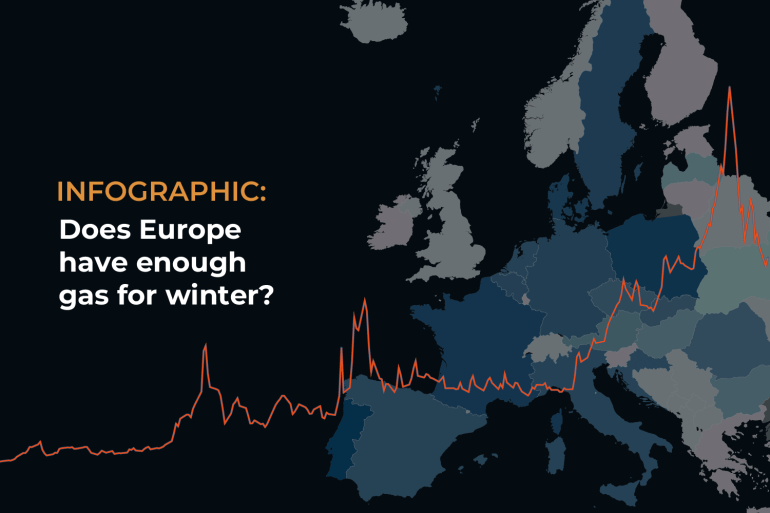
Russia’s war in Ukraine has led to a European energy crisis, with the price of natural gas soaring to new highs this year.
As Western nations sparred with Moscow over its invasion, Russia mostly cut off the supply of gas to Europe.
Keep reading
list of 4 itemsWill oil prices keep rising, and how will that affect inflation?
Iraq’s overreliance on oil threatens economic, political strife
South Sudan on the brink after oil exports derailed by Sudan’s civil war
In an attempt to mitigate its reliance on Russian gas, the European Union has set minimum storage targets.
Currently, gas storage capacity is 89.6 percent full, above the 80 percent target set by the EU for October 1.
“Storage is intended to deal with seasonal variations in consumption, not provide a strategic reserve in case of an embargo or blockade,” said John Kemp, a market analyst at Reuters.
“In the event of a complete cessation of imports from Russia, a colder than normal winter, or both, gas would become scarce before the end of March 2023.”
EU countries have agreed to impose emergency levies on the profits of energy firms and are discussing the possibility of a bloc-wide gas price cap.
Also agreed is a mandatory 5 percent cut in electricity use during peak price periods.
Global gas consumption is expected to decline by 0.8 percent in 2022, the result of a 10 percent reduction in demand in Europe, according to a report released by the International Energy Agency (IEA) this week.
Elevated gas prices timeline
Gas prices in Europe soared following Russia’s invasion of Ukraine on February 24.
In August, Russia stopped the flow of gas via its Nord Stream 1 pipeline, citing the need for repairs, and said it would not resume flows until sanctions were lifted against Moscow.
At the same time, European countries have struggled to find alternative energy supplies used to heat homes, generate electricity and run factories.
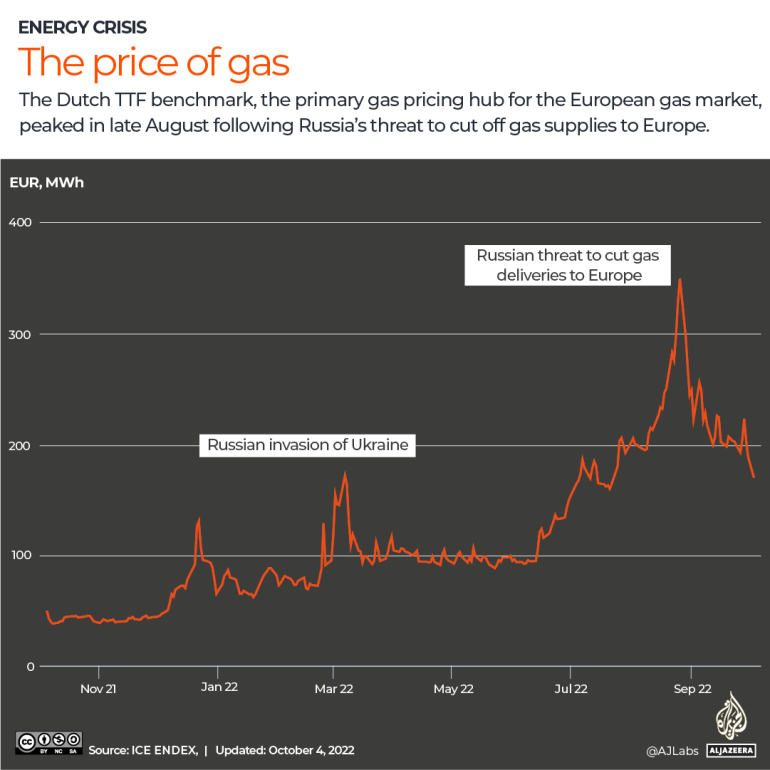
Furthermore, gas leaks have imperilled the Nord Stream 1 and 2 pipelines, with Denmark reporting that the largest leak caused surface-level disturbances in September.
Officials in Russia and the West have suspected sabotage as the cause of leaks, blaming each other.
In light of the EU reaching its gas storage mandate by October 1, fears of a gas supply shortage for winter have eased and the price has dropped recently.
But Kemp, at Reuters, warned: “Inventory accumulation has put Europe in a stronger position than at this time last year, but regional supplies are still at risk which will require further action from the market and policymakers.”
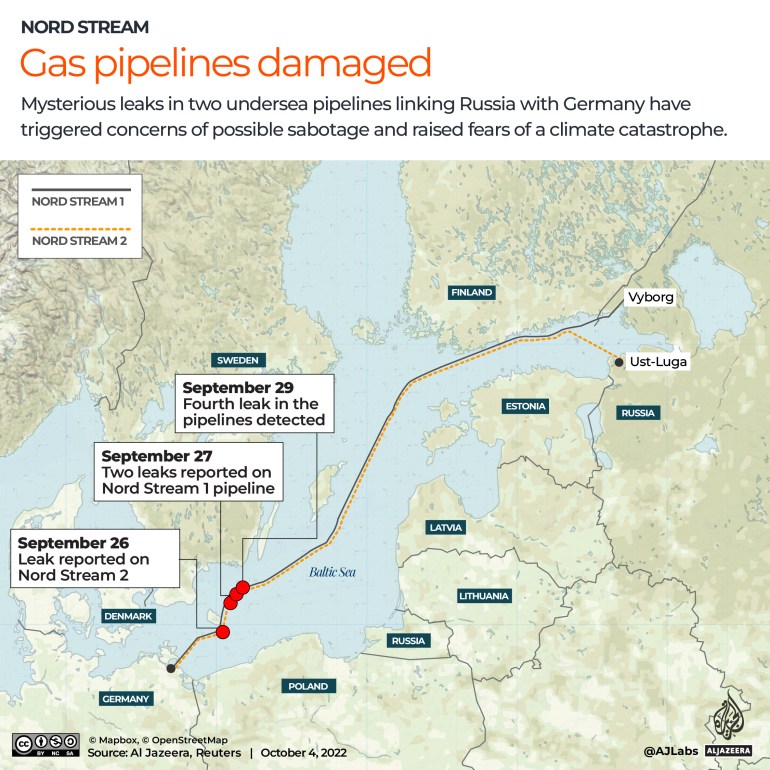
How much does Europe rely on gas?
Europe is highly dependent on gas for generating electricity, transport and heating. In 2021, 34 percent of the continent’s energy came from burning gas.
Belarus is the most gas-dependent country in Europe with 62 percent of its energy coming from gas, followed by Russia (54 percent), Italy (42 percent), the United Kingdom (40 percent) and Hungary (39 percent).
In 2021, 76 percent of Europe’s energy was made by burning fossil fuels – gas (34 percent), oil (31 percent) and coal (11 percent).
Renewable energy, including hydropower, solar, wind and biofuels, accounted for 14 percent, with nuclear making up the remaining 10 percent.
Russia’s gas supply squeeze has forced countries to accelerate their search for alternatives.
Germany announced that it would temporarily halt the phasing out of two nuclear power plants in an effort to shore up energy security.
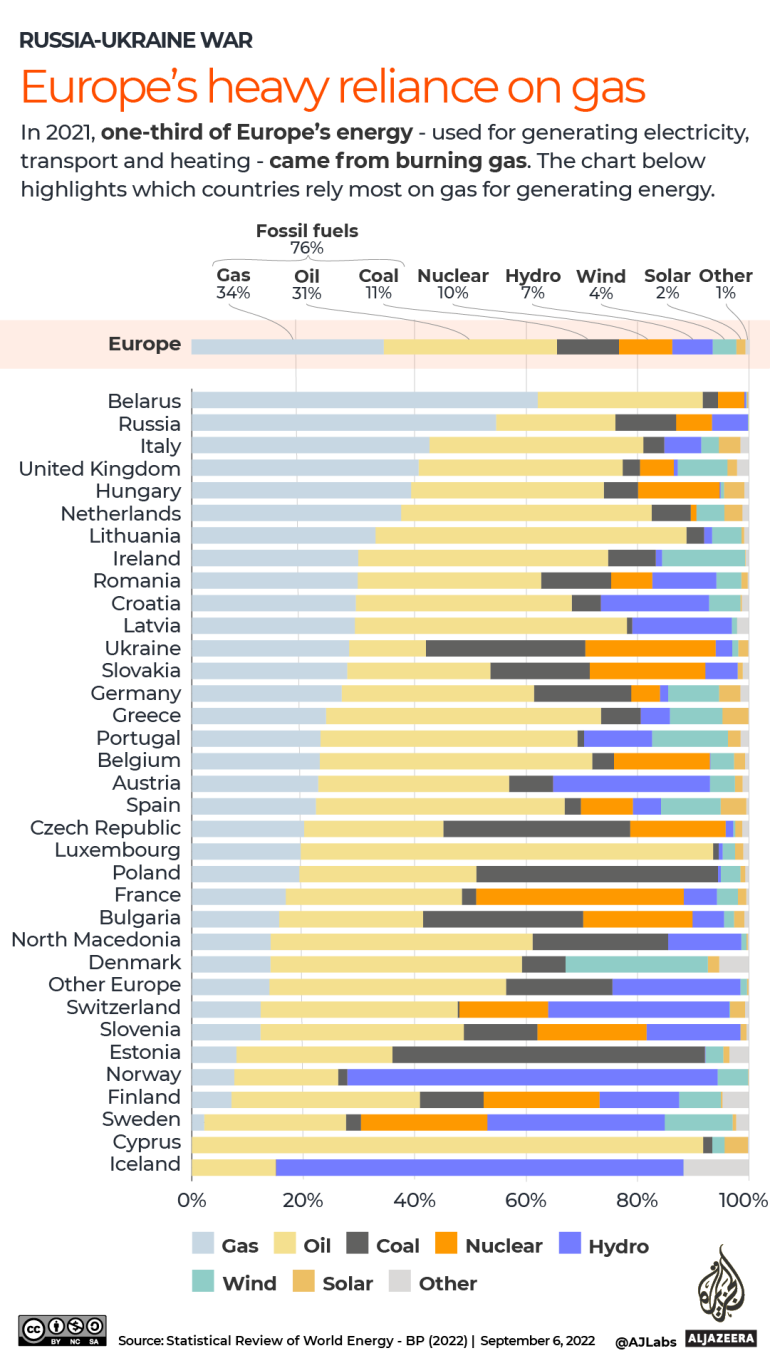
Gas storage in Europe
The EU is storing 15 percent more gas now than at the same time last year.
Most EU members have gas storage facilities in their respective states, with storage capacities in Germany, Italy, France, the Netherlands and Austria making up two-thirds of the EU’s total capacity.
Countries that do not have storage facilities will need to store 15 percent of their annual domestic gas consumption in stocks located in other member states, according to a European Council regulation.
These include Ireland, Finland, Estonia, Lithuania, Luxembourg, Slovenia, Greece and Cyprus.
Gas storage by member states
Europe is the largest importer of natural gas in the world.
In 2021, Russia, Germany, the UK, Italy and France consumed three-quarters of the continent’s 10,073 terawatt hours (TWh) of energy from gas.
In addition to navigating gas storage challenges, several EU nations have announced multibillion-dollar emergency measures to combat skyrocketing energy prices.
Germany’s gas storage is at 92 percent currently, while France is at 97 percent, Italy at 91 percent, and the Netherlands at 92 percent.
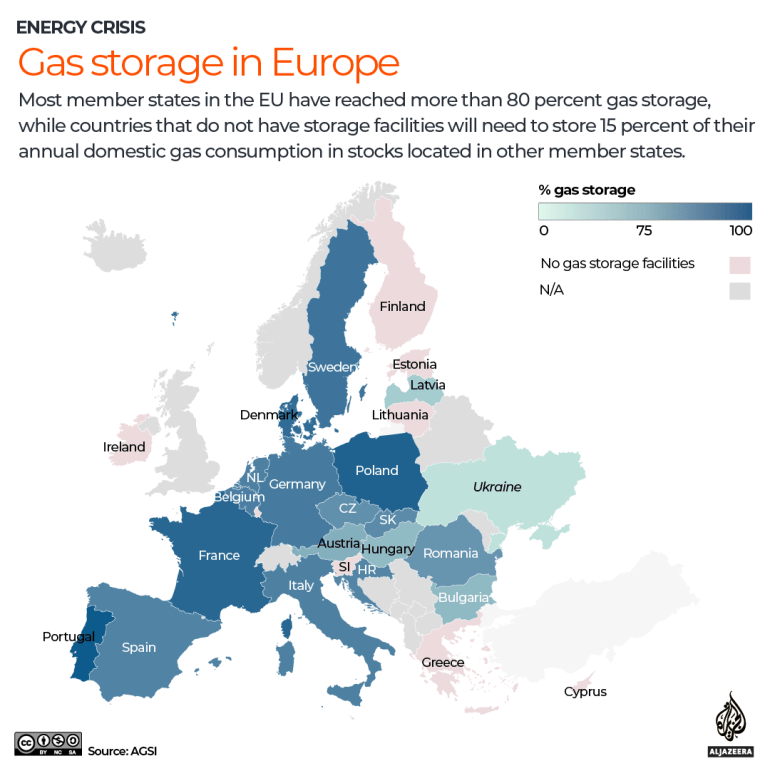
Will gas prices stay high?
Following EU efforts to avoid gas shortages, the price of gas will likely halve this winter, according to Goldman Sachs.
In September, the investment bank said it expects European wholesale natural gas prices to fall to below 100 euros ($99) per megawatt hour (MWh) by the end of March 2023, assuming normal winter conditions.
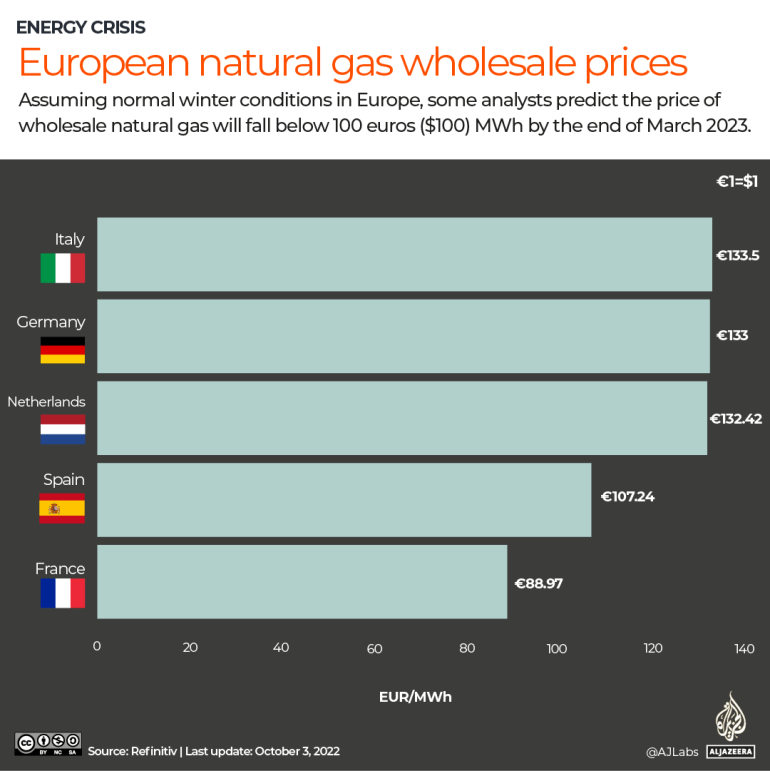
Liquified natural gas (LNG) imports have surged in Europe, with a 65 percent increase in demand in the first eight months of 2022 compared with a year earlier.
According to an analysis by the IEA, if there is a complete shutdown of Russian gas supply and without demand reductions in place, EU gas storage would be less than 20 percent full in February, assuming a high level of LNG supply.
A 9 percent drop in EU gas demand from the average level of the past five years would be necessary to maintain gas storage levels above 25 percent if there are lower LNG flows.